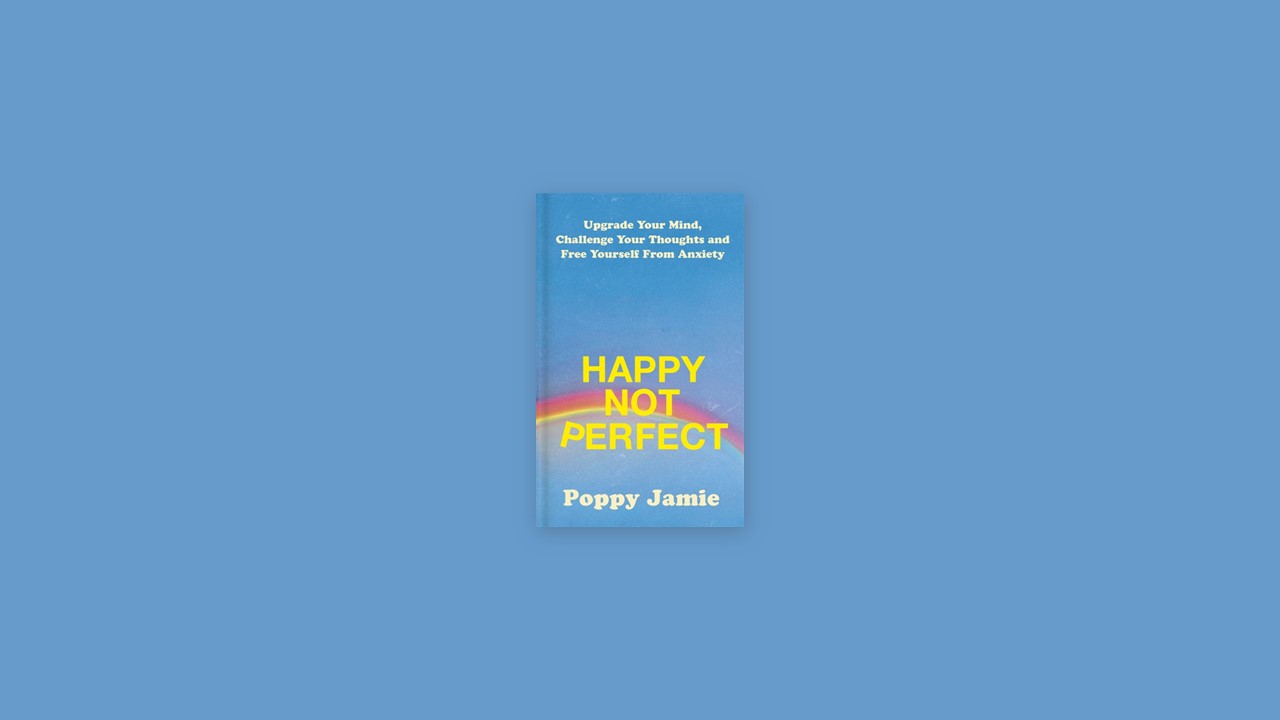Why Your Brain Is So Bitchy
We’re all dealing with constant anxiety and negativity, the biases that we were born to think and feel, and the faulty beliefs we learned along the way. The one strategy that eases deeply rooted thought patterns that trigger anxiety is flexibility, being able to bend, reframe, and challenge, and to see oneself and the world with a new perspective.
You know how Apple often sends those reminders to “update your software” that we ignore forever and then suddenly our laptop or phone starts to slow down? When it basically stops working, we THEN realize, Oh, it’s because I haven’t installed that latest update. We finally update and, as if by magic, our devices get back up to running at full speed.
Being flexible is about allowing yourself to be human.
Fundamentally, we’re all the same. We’re trying to satisfy the same need for love and belonging, and we’re all vulnerable to the same fear of rejection and loneliness. As much as we learn how to find love and soothe fear, we will still have to learn more, and more. Fortunately, as T. H. White once wrote, “Learn why the world wags, and what wags it. That is the only thing which the mind can never exhaust, never alienate, never be tortured by, never fear or distrust, and never dream of regretting.”
In this lifelong learning process of being alive, every human is going to get bruised along the way. How flexible we are about navigating unexpected blows determines how badly we hurt and how quickly we heal. Ironically, what we often do to protect ourselves from getting hurt—being rigid, robotic, and avoiding—can cause the most pain.
What Is Flexible Thinking?
The Flex has four steps: Connection, Curiosity, Choice, and Commitment.
Each of the four C’s (they’re easier to remember that way) will stretch the mind. In combination, they become a beautiful thought dance of life. The more you do the steps, the more limber and flexible you’ll become.
The point is, we need to learn each step very well first. And then we can build on those basics to choreograph a Flexi-dance that our minds can enjoy moving to. The hope is, we learn these techniques so well, our mind can then start flipping negative thoughts and behaviors on their head automatically without effort. ANTs (automatic negative thoughts) turn into AFTs (automatic flexible thoughts).
So, for the first few days of learning to stretch your mind, you’ll focus on Connection. During that time, whenever the bitchy inner voice says something that triggers anxiety, practice the step of linking the body and mind (much more detail coming up in the next chapter).
Once you’ve practiced Step #1 until you “get” it, you can move on to focus on Curiosity. Challenge any negative thought that comes up by asking, “Is this even true?” and identify the naughty ANT at play. Overgeneralizing? Fortune-telling? Black and white thinking?
When you’re solid at that, move on to Choice. When those mean thoughts and derailing emotions happen, continually ask, “What’s the flexible choice here?” and train yourself to see all the options, and to most fundamentally pick love over fear, every time.
Finally, focus on the step of Commitment to practice compassion and search for the hidden gifts in all experiences (even the seemingly bad ones).
Just by doing the individual steps, one by one, your mind will start to limber up and stretch away from the anxiety that’s trapped you. Once you’ve developed these new skills enough to start combining them…you’ll be dancing through life to a much better soundtrack.
#1 Connection
Step #1 of the Flex is Connection. For the next three days, whenever a triggering thought or feeling pops up, practice:
Connecting with the brain and body.
Connecting to yourself via movement.
Connecting with a higher vibrational energy.
Nothing can change unless our body and mind are playing on the same team. For most of us, our body goes left and our mind goes right because, instead of listening to our body, we try to detach from it. This tug-of-war isn’t just due to having a rigid mind about the way things are.
Stiff thinking says, “I’m in control!” setting off a mind-body battle. The resulting chronic anxiety, insomnia, weight gain, bloat, and other stress-related conditions and diseases prove that, in fact, we are not in control at all. The mind doesn’t “win.” The surest way to “lose” is to foster disconnect between our minds and bodies.
Flexible thinking requires our mind and body to work together toward wholeness. It begins with becoming aware of what our clever bodies are saying first, so we can self-diagnose. It might be something as simple as acknowledging that our body is exhausted and needs to turn in early, instead of pushing ourselves to stay up working or partying. Imagine what life would be like if we trusted what our body was trying to tell us. The first step of the Flex connects physical sensations with emotions, accepting what is happening in the moment and giving ourselves permission to feel.
#2 Curiosity
Step #2 of the Flex is Curiosity. For the next few days or a week, whenever you notice an unpleasant emotion or the thought that you’re stuck spiraling, focus on being:
Curious about your thoughts.
Curious about your current reality and memories.
Curious about who you are behind your social masks.
Living curiously is a way of life as well as a key step to the Flex. It is the opposite of being a sponge. Instead of believing everything your bitchy inner critic or anyone else lampoons you with, question everything and be shrewd with the information you let in long term. Curiosity is just common sense. When fear speaks, it speaks lies that are disguised as truth and it can be very convincing. Curiosity is the language of self-love because you’re protecting your delicate mind from believing BS.
To be more flexible, we have to become explorers and detectives, to question everything before we form opinions or draw conclusions. Flexible thoughts challenge convention to widen our perspective. Flexibility is having a mindset of openness and a childlike hunger for knowledge and discovery.
Inflexible thinking relies on conventional set-in-stone beliefs about everything. Stiff thinkers find comfort in the familiar and are too afraid to think differently, face their fears, and actually learn something new or of value about the world and themselves.
#3 Choice
Step #3 of the Flex is Choice. Once you’re sufficiently skilled at the previous two steps, it’s time to devote your focus to a new lesson. Whenever faced with a difficult feeling, thought, or situation, make a conscious…
Choice about which inner voice you listen to.
Choice about how you treat yourself and others.
Choice about what you ask for in life.
Flexibility is understanding that, no matter what we’re going through, we always have multiple choices going forward.
The crazy thing about mind stuff is that when we slow down, we have so much more control than we think we have, over what we choose to think and how we react and behave. This Flexi-step is perhaps the most liberating because it gives us the power to steer our lives. Consciously reminding ourselves that we are in the driver’s seat and we can choose to either put a mental muzzle on our chattering monkey minds or give in to it. We can choose to embrace wholeness, accepting our brilliant mix of beauty and flaws, or continue to feel fraudulent. We can choose to forgive ourselves and anyone else for mistakes and transgressions instead of beating ourselves up or holding toxic grudges. It’s like taking a second when arriving at a fork in the road to decide whether to drive north into love or south into fear. Choose true north.
The mental and emotional choices that lie before us might not always be painless. But choices always exist, and how we experience life within our heads is completely up to us. Once we call BS on our brain’s lies, we’re no longer guided by our innate biases, and we create space to independently decide how we view our lives. Acknowledging the power we have to make different choices and thus new thoughts is the greatest freedom offered to us. This is empowered flexible thinking.
#4 Commitment
Step #4 of the Flex is Commitment. For the next few days to a week, you will practice making a…
Commitment to taking action to effect change.
Commitment to upholding values, whatever they might be.
Commitment to finding the gifts that lie within struggle.
Commitment to feeling grateful and celebrating life’s joys.
Stiff thoughts lead us to get stuck in worry loops and to repeat, over and over again, bad habits that were created in the past.
Flexible thoughts stretch to find new outlooks, possibilities, and understandings to create the brilliant future we want.
The fourth and final step of the Flex is Commitment, because we’re talking about long-lasting liberation from anxiety and self-doubt. Change requires effort. New neural pathways aren’t blazed overnight; new habits don’t take root in a day or a week or a month. Real change only occurs through consistent flexing.
Every moment going forward is about bending thoughts in the direction that takes us to a compassionate liberated direction. It won’t magically happen on its own. We have to be consciously flexible in the present moment to ensure we manifest a better future.
Like anything worthwhile, it takes desire and effort to make our shiny new thoughts. The Flex is a veritable healthy-thought factory. We just have to want to keep the machines running to get endless benefits. It takes a bit of effort to broaden our horizons, have courage to challenge and then to imagine new happier outcomes.


